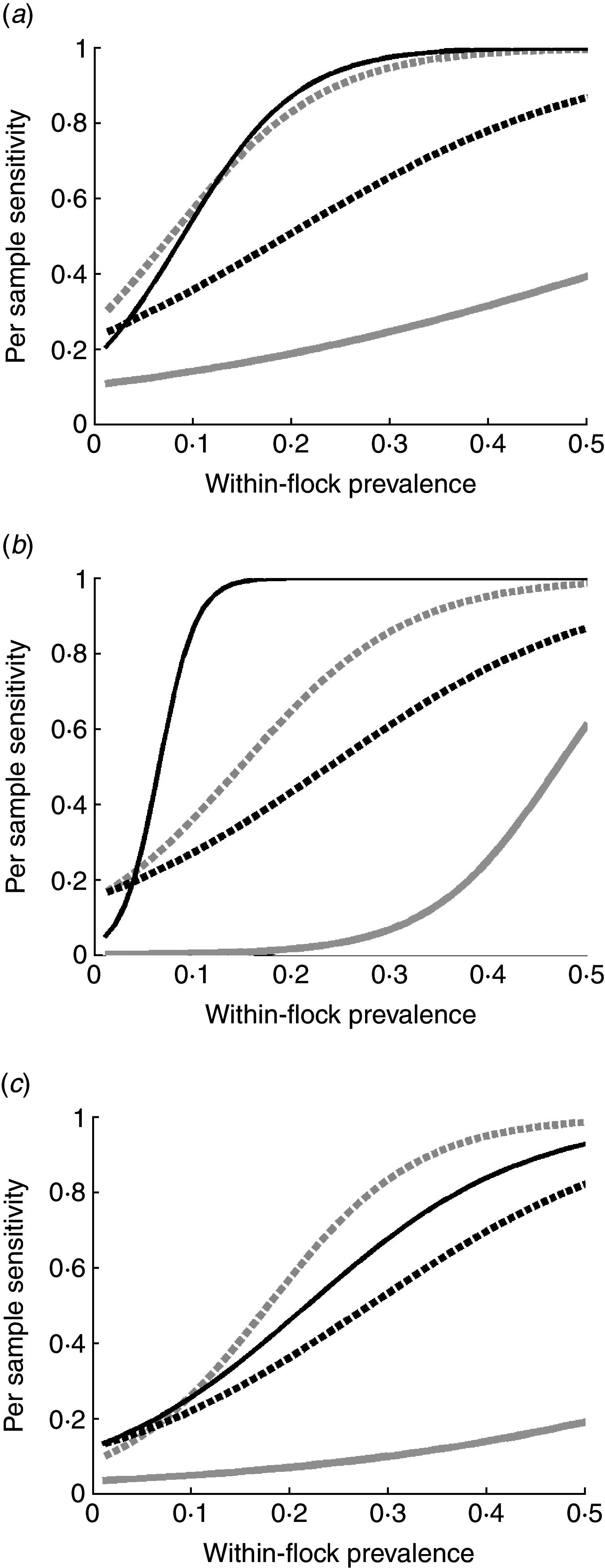Estimation of the sensitivity of environmental sampling for detection of Salmonella in commercial layer flocks post-introduction of national control programmes
- PMID: 24020913
- PMCID: PMC9151119
- DOI: 10.1017/S0950268813002173
Estimation of the sensitivity of environmental sampling for detection of Salmonella in commercial layer flocks post-introduction of national control programmes
Abstract
A key element of national control programmes (NCPs) for Salmonella in commercial laying flocks, introduced across the European Union, is the identification of infected flocks and holdings through statutory sampling. It is therefore important to know the sensitivity of the sampling methods, in order to design effective and efficient surveillance for Salmonella. However, improved Salmonella control in response to the NCP may have influenced key factors that determine the sensitivity of the sampling methods used to detect Salmonella in NCPs. Therefore the aim of this study was to compare estimates of the sensitivity of the sampling methods using data collected before and after the introduction of the NCP, using Bayesian methods. There was a large reduction in the sensitivity of dust in non-cage flocks between the pre-NCP studies (81% of samples positive in positive flocks) and post-NCP studies (10% of samples positive in positive flocks), leading to the conclusion that sampling dust is not recommended for detection of Salmonella in non-cage flocks. However, cage dust (43% of samples positive in positive flocks) was found to be more sensitive than cage faeces (29% of samples positive in positive flocks). To have a high probability of detection, several NCP-style samples need to be used. For confirmation of Salmonella, five NCP faecal samples for cage flocks, and three NCP faecal boot swab samples for non-cage flocks would be required to have the equivalent sensitivity of the EU baseline survey method, which was estimated to have an 87% and 75% sensitivity to detect Salmonella at a 5% within-flock prevalence in cage and non-cage flocks, respectively.
Figures


References
-
- Anon. The Community Summary Report on Trends and Sources of Zoonoses, Zoonotic Agents, Antimicrobial Resistance and Foodborne Outbreaks in the European Union in 2006. EFSA Journal 2007; 130: chapter 3·1 pp. 24–105.
-
- Coyle EF, et al. Salmonella enteritidis phage type 4 infection: association with hen's eggs. Lancet 1988; 2: 1295–1297. - PubMed
-
- Anon. Decision (EC) No 2160/2003 of 17 November 2003 on the control of Salmonella and other specified food-borne zoonotic agents.
-
- Aho M. Problems of Salmonella sampling. International Journal of Food Microbiology 1992; 15: 225–235. - PubMed
Publication types
MeSH terms
LinkOut - more resources
Full Text Sources
Other Literature Sources

